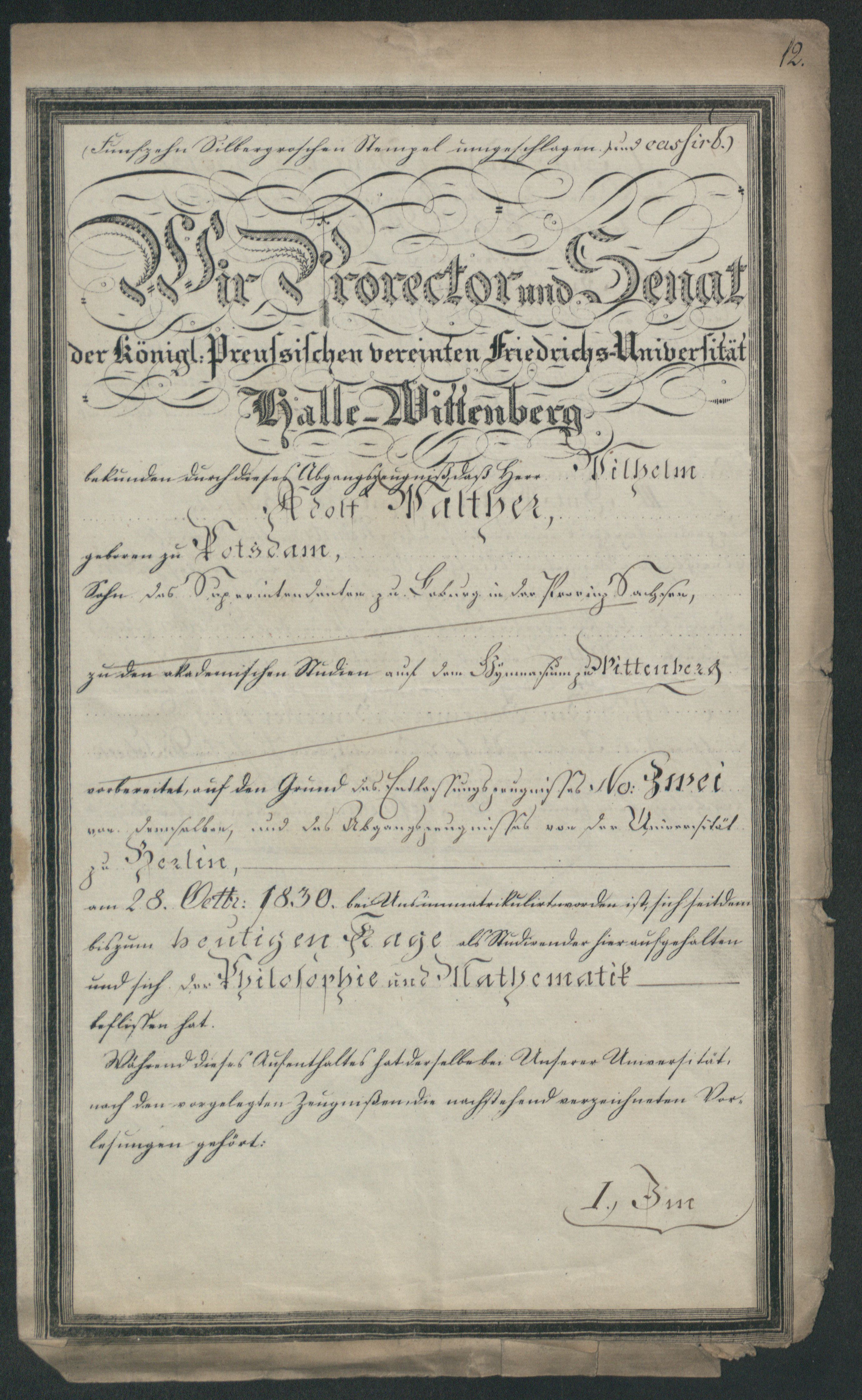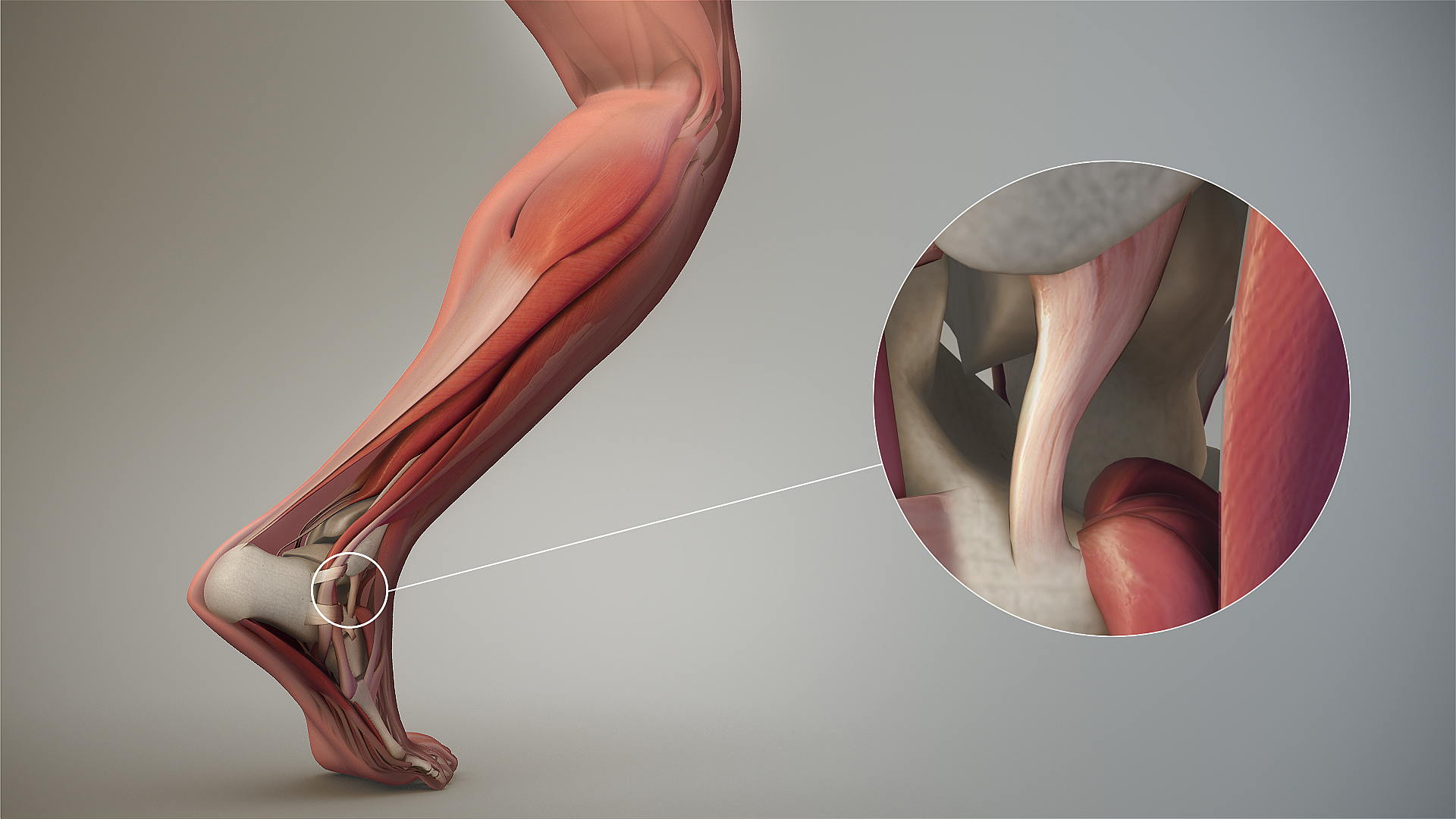|
Johann Friedrich Meckel, The Elder
Johann Friedrich Meckel the Elder (31 July 1724 – 18 September 1774) was a German anatomist born in Wetzlar. He often has "the Elder" appended to his name to avoid confusion with his famous grandson Johann Friedrich Meckel (1781–1833), who was also an anatomist and often has "the Younger" included with his name. The elder Meckel's son, Philipp Friedrich Theodor Meckel (1755–1803) and another grandson, August Albrecht Meckel (1790–1829) were also anatomists. Meckel earned his medical doctorate from the University of Göttingen in 1748, and in his thesis, "''Tractatus anatomico physiologicus de quinto pare nervorum cerebri''", he documented his discovery of the submandibular ganglion. Subsequently, he moved to Berlin, where he worked as a prosector and taught classes on midwifery. In 1751 he became a professor of anatomy, botany and obstetrics. In 1773, Meckel was elected a foreign member of the Royal Swedish Academy of Sciences. Eponyms Meckel has a number of anatomical ... [...More Info...] [...Related Items...] OR: [Wikipedia] [Google] [Baidu] |
Wetzlar
Wetzlar () is a city in the state of Hesse, Germany. It is the twelfth largest city in Hesse with currently 55,371 inhabitants at the beginning of 2019 (including second homes). As an important cultural, industrial and commercial center, the university town is one of the ten regional centers in the state of Hesse. A former free imperial city, it gained much of its fame as the seat of the Imperial Supreme Court (''Reichskammergericht'') of the Holy Roman Empire. Located 51 kilometers north of Frankfurt, at 8° 30′ E, 50° 34′ N, Wetzlar straddles the river Lahn and is on the German Timber-Frame Road, which passes mile upon mile of half-timbered houses. Historically, the city has acted as the hub of the Lahn-Dill-Kreis on the north edge of the Taunus. Tourists know the city for its ancient town and its medieval Catholic/Protestant shared Wetzlar Cathedral, cathedral of St. Mary. Notable architectural features include the Eisenmarkt and the steep gradients and tightly packed str ... [...More Info...] [...Related Items...] OR: [Wikipedia] [Google] [Baidu] |
Sphenopalatine Ganglion
The pterygopalatine ganglion (aka Meckel's ganglion, nasal ganglion, or sphenopalatine ganglion) is a parasympathetic ganglion in the pterygopalatine fossa. It is one of four parasympathetic ganglia of the head and neck, (the others being the submandibular, otic, and ciliary ganglion). It is innervated by the Vidian nerve (formed by the greater superficial petrosal nerve branch of the facial nerve and deep petrosal nerve) and maxillary division of the trigeminal nerve. Its postsynaptic axons project to the lacrimal glands and nasal mucosa. The flow of blood to the nasal mucosa, in particular the venous plexus of the conchae, is regulated by the pterygopalatine ganglion and heats or cools the air in the nose. Structure The pterygopalatine ganglion (of Meckel), the largest of the parasympathetic ganglia associated with the branches of the maxillary nerve, is deeply placed in the pterygopalatine fossa, close to the sphenopalatine foramen. It is triangular or heart-shaped, ... [...More Info...] [...Related Items...] OR: [Wikipedia] [Google] [Baidu] |
United States
The United States of America (USA), also known as the United States (U.S.) or America, is a country primarily located in North America. It is a federal republic of 50 U.S. state, states and a federal capital district, Washington, D.C. The 48 contiguous states border Canada to the north and Mexico to the south, with the semi-exclave of Alaska in the northwest and the archipelago of Hawaii in the Pacific Ocean. The United States asserts sovereignty over five Territories of the United States, major island territories and United States Minor Outlying Islands, various uninhabited islands in Oceania and the Caribbean. It is a megadiverse country, with the world's List of countries and dependencies by area, third-largest land area and List of countries and dependencies by population, third-largest population, exceeding 340 million. Its three Metropolitan statistical areas by population, largest metropolitan areas are New York metropolitan area, New York, Greater Los Angeles, Los Angel ... [...More Info...] [...Related Items...] OR: [Wikipedia] [Google] [Baidu] |
Neurosurgery (journal)
''Neurosurgery'' is a monthly peer-reviewed medical journal of neurosurgery and the official journal of the Congress of Neurological Surgeons. It is published by Lippincott Williams & Wilkins. The journal publishes original research, reviews, and editorials. There are also two associated journals. The ''Operative Neurosurgery'' journal focuses on technical material that highlights operative procedures, anatomy, instrumentation, devices, and technology. There is also an online-only, open access journal ''Neurosurgery Practice'' (previously named "Neurosurgery Open") which was debuted in 2019. History Founding (1970s) Discussion about a new specialist journal began in 1973 at a Southern Neurosurgical Society meeting, held in New Orleans, Louisiana. For the next three years, negotiations took place to either purchase an existing journal or start a new one. In July 1976, during a meeting of the executive committee of the Congress of Neurological Surgeons, the decision to begin a ... [...More Info...] [...Related Items...] OR: [Wikipedia] [Google] [Baidu] |
Halle, Saxony-Anhalt
Halle (Saale), or simply Halle (), is the second largest city of the German state of Saxony-Anhalt. It is the sixth-most populous city in the area of former East Germany after (East) Berlin, Leipzig, Dresden, Chemnitz and Magdeburg as well as the 31st-largest city of Germany. With around 226,000 inhabitants, it is less populous than the state capital, Magdeburg. With Leipzig, the largest city of Saxony, Halle forms the polycentric Leipzig-Halle conurbation. Leipzig/Halle International Airport lies between the two cities, in Schkeuditz. The Leipzig-Halle conurbation is at the heart of the larger Central German Metropolitan Region. Halle has been known by many names throughout its history. From the 15th to the 17th century: ''Hall in Sachsen''. From then until the beginning of the 20th century, the name Halle an der Saale was used, and still remains a more formal reference for the city. Additionally, from 1965 to 1995 the city was referred to as ''Halle/Saale''. Halle lies i ... [...More Info...] [...Related Items...] OR: [Wikipedia] [Google] [Baidu] |
Martin Luther University Of Halle-Wittenberg
Martin Luther University Halle-Wittenberg (), also referred to as MLU, is a public university, public research university in the cities of Halle, Saxony-Anhalt, Halle and Wittenberg. It is the largest and oldest university in the German State of Germany, state of Saxony-Anhalt. MLU offers German and international (English) courses leading to academic degrees such as Bachelor of Arts, BA, B.Sc., BSc, Master of Arts, MA, M.Sc., MSc, Doctorate, doctoral degrees, and habilitation. The university was created in 1817 through the merger of the University of Wittenberg (founded in 1502) and the University of Halle (founded in 1694). MLU is named after Protestant Reformation, Protestant reformer Martin Luther, who was a professor in Wittenberg. Today, the university campus is located in Halle, while ''Leucorea Foundation'' in Wittenberg serves as MLU's convention centre. History University of Wittenberg (''Universität Wittenberg'') was founded in 1502 by Frederick III, Elector of ... [...More Info...] [...Related Items...] OR: [Wikipedia] [Google] [Baidu] |
Situs Inversus
''Situs inversus'' (also called ''situs transversus'' or ''oppositus'') is a Congenital disorder, congenital condition in which the major Organ (anatomy), visceral organs are reversed or mirror image, mirrored from their normal positions. The normal arrangement of internal organs is known as ''situs solitus''. Although cardiac problems are more common, many people with ''situs inversus'' have no medical symptoms or complications resulting from the condition, and until the advent of modern medicine, it was usually undiagnosed. ''Situs inversus'' is found in about 0.01% of the population, or about 1 person in 10,000. In the most common situation, ''situs inversus totalis'', it involves complete transposition (right to left reversal) of all of the viscera. The heart is not in its usual position in the left chest, but is on the right, a condition known as ''dextrocardia'' (). Because the relationship between the organs is not changed, most people with ''situs inversus'' have no associa ... [...More Info...] [...Related Items...] OR: [Wikipedia] [Google] [Baidu] |
Teratology
Teratology is the study of abnormalities of physiological development in organisms during their life span. It is a sub-discipline in medical genetics which focuses on the classification of congenital abnormalities in dysmorphology caused by teratogens and also in pharmacology and toxicology. Teratogens are substances that may cause non-heritable birth defects via a toxic effect on an embryo or fetus. Defects include malformations, disruptions, deformations, and dysplasia that may cause stunted growth, delayed mental development, or other congenital disorders that lack structural malformations. These defects can be recognized prior to or at birth as well as later during early childhood. The related term developmental toxicity includes all manifestations of abnormal development that are caused by environmental insult. The extent to which teratogens will impact an embryo is dependent on several factors, such as how long the embryo has been exposed, the stage of development the ... [...More Info...] [...Related Items...] OR: [Wikipedia] [Google] [Baidu] |
Trigeminal Nerve
In neuroanatomy, the trigeminal nerve (literal translation, lit. ''triplet'' nerve), also known as the fifth cranial nerve, cranial nerve V, or simply CN V, is a cranial nerve responsible for Sense, sensation in the face and motor functions such as biting and chewing; it is the most complex of the cranial nerves. Its name (''trigeminal'', ) derives from each of the two nerves (one on each side of the pons) having three major branches: the ophthalmic nerve (V), the maxillary nerve (V), and the mandibular nerve (V). The ophthalmic and maxillary nerves are purely sensory, whereas the mandibular nerve supplies motor as well as sensory (or "cutaneous") functions. Adding to the complexity of this nerve is that Autonomic nervous system, autonomic nerve fibers as well as special sensory fibers (taste) are contained within it. The motor division of the trigeminal nerve derives from the Basal plate (neural tube), basal plate of the embryonic pons, and the sensory division originates in ... [...More Info...] [...Related Items...] OR: [Wikipedia] [Google] [Baidu] |
Tympanic Membrane
In the anatomy of humans and various other tetrapods, the eardrum, also called the tympanic membrane or myringa, is a thin, cone-shaped membrane that separates the external ear from the middle ear. Its function is to transmit changes in pressure of sound from the air to the ossicles inside the middle ear, and thence to the oval window in the fluid-filled cochlea. The ear thereby converts and amplifies vibration in the air to vibration in cochlear fluid. The malleus bone bridges the gap between the eardrum and the other ossicles. Rupture or perforation of the eardrum can lead to conductive hearing loss. Collapse or retraction of the eardrum can cause conductive hearing loss or cholesteatoma. Structure Orientation and relations The tympanic membrane is oriented obliquely in the anteroposterior, mediolateral, and superoinferior planes. Consequently, its superoposterior end lies lateral to its anteroinferior end. Anatomically, it relates superiorly to the middle cranial fos ... [...More Info...] [...Related Items...] OR: [Wikipedia] [Google] [Baidu] |
Malleus
The ''malleus'', or hammer, is a hammer-shaped small bone or ossicle of the middle ear. It connects with the incus, and is attached to the inner surface of the eardrum. The word is Latin for 'hammer' or 'mallet'. It transmits the sound vibrations from the eardrum to the ''incus'' (anvil). Structure The malleus is a bone situated in the middle ear. It is the first of the three ossicles, and attached to the eardrum (tympanic membrane). The head of the malleus is the large protruding section, which attaches to the incus. The head connects to the neck of malleus. The bone continues as the handle (or manubrium) of malleus, which connects to the tympanic membrane. Between the neck and handle of the malleus, lateral and anterior processes emerge from the bone. The bone is oriented so that the head is superior and the handle is inferior. Development Embryologically, the malleus is derived from the first pharyngeal arch along with the ''incus''. In humans it grows from Meckel's ... [...More Info...] [...Related Items...] OR: [Wikipedia] [Google] [Baidu] |
Ligament
A ligament is a type of fibrous connective tissue in the body that connects bones to other bones. It also connects flight feathers to bones, in dinosaurs and birds. All 30,000 species of amniotes (land animals with internal bones) have ligaments. It is also known as ''articular ligament'', ''articular larua'', ''fibrous ligament'', or ''true ligament''. Comparative anatomy Ligaments are similar to tendons and fasciae as they are all made of connective tissue. The differences among them are in the connections that they make: ligaments connect one bone to another bone, tendons connect muscle to bone, and fasciae connect muscles to other muscles. These are all found in the skeletal system of the human body. Ligaments cannot usually be regenerated naturally; however, there are periodontal ligament stem cells located near the periodontal ligament which are involved in the adult regeneration of periodontist ligament. The study of ligaments is known as . Humans Other ligame ... [...More Info...] [...Related Items...] OR: [Wikipedia] [Google] [Baidu] |





